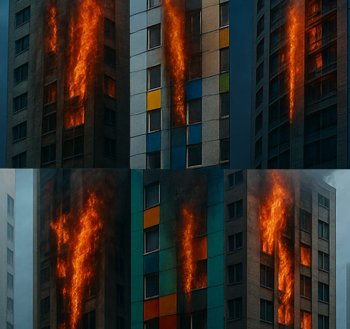Energy calculation as a service ECaaS
ECaaS provides an API to the Home Energy Model so users can produce software, and a basic frontend so users can validate building designs.
Energy Calculation as a Service (ECaaS) is a calculator service run by MHCLG (Ministry of Housing, Communities, and Local Government) that provides a performant implementation of the Home Energy Model (HEM), a methodology for predicting the energy performance of buildings, for various future statutory purposes including, but not limited to, calculating compliance with the Future Homes Standard (FHS).
The service takes the form of an API that can be used by authorised bodies to build software for statutory purposes that require calculations using the Home Energy Model. The service will become the only valid means to confirm compliance with Part L of the Building Regulations when referring to the Future Homes Standard. For other users, the underlying software libraries are open source and can be used to conduct calculations for non-statutory purposes.
For access to the ECaaS API contact ECaaS@communities.gov.uk
The Rust library used by ECaaS, developed within MHCLG, can be found on GitHub, and the Python implementation written by BRE under commission from DESNZ (Department of Energy Security and Net Zero) is published on BRE’s Azure DevOps space.
A basic web frontend is being developed to support stakeholders as they familiarise themselves with the HEM methodology and work out the impact on the types of home that they are building.
This article is based on the UK government "Guidance Energy calculation as a service (ECaaS): Access the Home Energy Model" published on 3 February 2025.
[edit] Related articles on Designing buildings
- Air permeability testing.
- Air tightness.
- Applying Fabric First principles: Complying with UK energy efficiency requirements FB 80.
- Approved building energy calculation software.
- Approved documents.
- Building Regulations.
- Building Research Establishment.
- Brief notes on proposed changes to EPCs.
- Changes in SAP 10.
- Co-heating test.
- Conventions for U-value calculations (2006 edition) BR 443.
- Dynamic Simulation Model.
- Emission rates.
- Energy efficiency of traditional buildings.
- Energy Performance Certificates.
- Energy Performance of Buildings Directive.
- Home Energy Model comparisons: SAP 10.2, PHPP, ESP-r and the new HEM.
- IHBC responds to Energy Company Obligation ECO4 and PAS 2035.
- Minimum energy efficiency standard (MEES).
- National Calculation Method.
- Passivhaus vs SAP.
- Standard Assessment Procedure SAP.
- Simplified Building Energy Model.
- Target fabric energy efficiency rate.
- The Home Energy Model and Future Homes Standard assessment wrapper.
- Thermal dynamic analysis.
- U-value conventions in practice: Worked examples using BR 443.
- What is the new Home Energy Model or HEM?.
Featured articles and news
Delivering for tenants; National Retrofit Hub
New report offers recommendations to strengthen energy efficiency standards to protect private renters.
Government consultations for the summer of 2025
A year of Labour, past and present consultations on the environment, the built environment, training and tax.
CMA competitiveness probe of major housing developers
100 million affordable housing contributions committed with further consultation published.
Homes England supports Greencore Homes
42 new build affordable sustainable homes in Oxfordshire.
Zero carbon social housing: unlocking brownfield potential
Seven ZEDpod strategies for brownfield housing success.
CIOB report; a blueprint for SDGs and the built environment
Pairing the Sustainable Development Goals with projects.
Types, tests, standards and fires relating to external cladding
Brief descriptions with an extensive list of fires for review.
Latest Build UK Building Safety Regime explainer published
Key elements in one short, now updated document.
UKGBC launch the UK Climate Resilience Roadmap
First guidance of its kind on direct climate impacts for the built environment and how it can adapt.
CLC Health, Safety and Wellbeing Strategy 2025
Launched by the Minister for Industry to look at fatalities on site, improving mental health and other issues.
One of the most impressive Victorian architects. Book review.
Common Assessment Standard now with building safety
New CAS update now includes mandatory building safety questions.
RTPI leader to become new CIOB Chief Executive Officer
Dr Victoria Hills MRTPI, FICE to take over after Caroline Gumble’s departure.
Social and affordable housing, a long term plan for delivery
The “Delivering a Decade of Renewal for Social and Affordable Housing” strategy sets out future path.
A change to adoptive architecture
Effects of global weather warming on architectural detailing, material choice and human interaction.
The proposed publicly owned and backed subsidiary of Homes England, to facilitate new homes.
How big is the problem and what can we do to mitigate the effects?
Overheating guidance and tools for building designers
A number of cool guides to help with the heat.
The UK's Modern Industrial Strategy: A 10 year plan
Previous consultation criticism, current key elements and general support with some persisting reservations.
Building Safety Regulator reforms
New roles, new staff and a new fast track service pave the way for a single construction regulator.

























